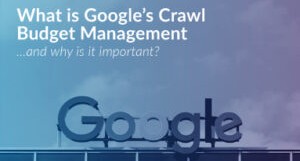
If you manage a website that is extremely large or a site that contains content which is very regularly updated, it’s important to prioritise the pages you want Google to pay attention to. If Googlebot is just left to crawl and index the site as and when it pleases, it’s extremely likely that Google will attempt to crawl far too many pages at once – which can lead to a number of issues such as multiple parallel connections overwhelming your servers, or Google automatically prioritising unimportant pages whilst ignoring pages that are extremely valuable to you as a business.
As a result, pages within your site that could potentially rank really well in organic Google search results may instead be completely disregarded. For example, Google could easily choose to prioritise a standard About page which is purely informational and doesn’t directly drive conversions, in place of a core product page which has the potential to rank well at the top of Google whilst also directly driving multiple sales on a daily basis.
So… how can we control what Google crawls and indexes and how do we prioritise the pages that are important to your business?
‘Crawl Budget’ is the term used to describe the volume of resources and time that Google devotes to crawling an individual site. This crawl budget is determined by two main factors – your crawl capacity limit (the maximum number of simultaneous connections that Google can use to crawl a site AND the duration of the delay between fetches) and the crawl demand (how important Google deem a crawl of the site to be, depending on the size of the site, it’s popularity, how often it is updated and so on).
Your Crawl Capacity can vary depending on a number of factors, including:
Crawl Demand can also vary, depending on the following factors:
Notes: Site wide updates such as domain changes or site moves can also trigger an increase in crawl demand, as Google will detect that all of a site’s URLs have been updated and so will need to be reindexed.
So, now that we know what factors impact your crawl budget, how do we help ensure that we maximise your crawling efficiency, using this information? Luckily, Google has also provided a list of Best Practices for this sort of thing.
There are a number of tools and methods that you can use to tell Google which pages within your site are really important to you – those which you really need to rank within organic Google searches. These include:
So now that you understand more about Googlebot’s Crawl Budget and how best to manage it – as well as Google’s Best Practices – what’s next? Aside from the above, it’s also incredibly important to make sure that your pages load efficiently and that you regularly monitor your site crawling.
If you’re interested in how to best monitor your site’s crawling and indexing as well as the key steps Google recommend during this process, you’re in luck – part 2 of this blog, ‘Googlebot Site Crawling and Indexing – 5 Key Steps You Should Know’ is coming soon, so check back regularly for updates.
If you have any questions regarding this or would like experienced SEO professionals to take a look at your website on your behalf, the Technical SEO team here at Varn would love to hear from you. Simply drop us an email at contact@varn.co.uk
Varn is an expert specialist SEO search marketing agency. Technical SEO * AI & Innovation; Data Analytics * Offpage SEO
You need to load content from reCAPTCHA to submit the form. Please note that doing so will share data with third-party providers.
More InformationNotifications